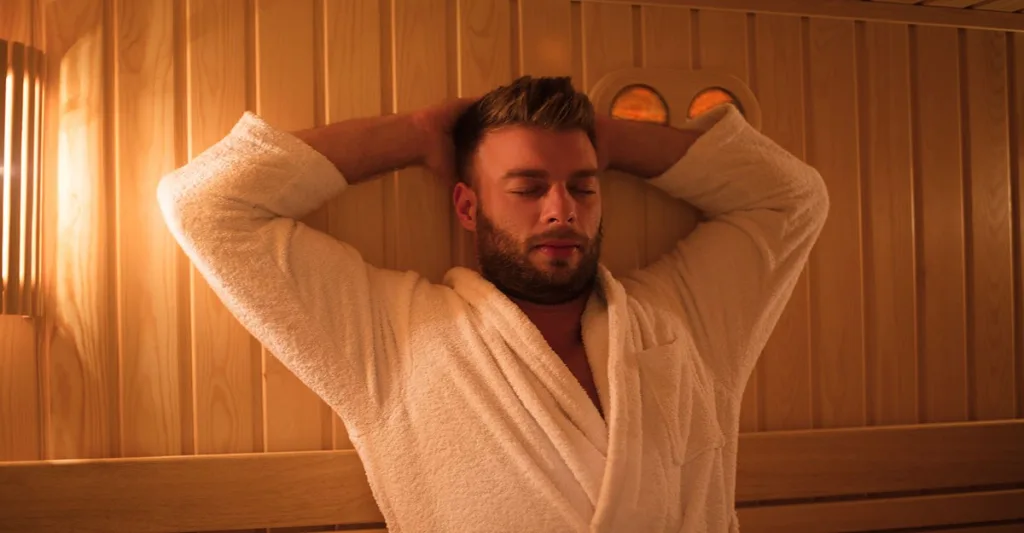Cold and heat therapies using traditional, no-tech tools such as ice packs or heated pads remain highly effective, popular treatments in inpatient and at-home care settings. But in recent years, higher-tech temperature therapy tools have emerged that offer some interesting benefits of their own.
Here, we take a closer look at traditional uses for cold and heat therapies, along with how some cutting-edge methods are providing pain relief and an improved sense of well-being for those who use them.
Traditional uses of cold and heat therapies
The traditional application of cold therapy, also known as cryotherapy, includes using cold packs, ice massage, and vapocoolant spray, said Leo Arguelles, DPT, PT, a spokesperson for the American Physical Therapy Association.

According to Arguelles, cryotherapy is used to decrease pain, inflammation, and unwanted muscular activity; reduce or eliminate edema; and enhance muscle and neuromuscular performance. Heat therapy, also known as thermotherapy, involves using dry heat, heat packs, paraffin baths, and fluidotherapy. Arguelles said indications for using heat therapy include to:
- Modulate or decrease pain
- Improve circulation
- Modify connective tissue extensibility and restriction associated with musculoskeletal injury or circulatory dysfunction
- Increase joint mobility
- Decrease unwanted muscular activity
- Enhance muscle and neuromuscular performance
- Increase tissue perfusion and remodel scar tissue
Although they have numerous uses, heat or cold are not stand-alone therapies. "Heat and ice are not seen as treatments, but rather as modalities that can sometimes help someone experience temporary relief," said Arguelles. He also emphasized that there are some medical conditions in which using a cold pack or heat pack can do more harm than good.
"When in doubt, people should consult a physical therapist or their primary care physician for a personalized treatment plan for their condition," he said. "Also, burns from cold and heat are real, so caution should be taken to make sure that there are layers of towels between the skin and the heat and cold source. Skin should be monitored before and after, particularly if there are deficits in sensation."
An emerging use of cryotherapy

A novel trend in using cryotherapy, called whole-body cryotherapy, involves exposing the entire body to cold temperatures.
"It involves going into a Restore-designed cryotherapy chamber and immersing the body in a dry, cold environment for three minutes," said Annie Crete, BSN, RN, Senior Manager of Medical Innovation at Restore Hyper Wellness, based in Austin, Texas. "Times and temperatures are customized depending on the age of the client and if it's their first visit or a subsequent one."
Additionally, the recommended frequency of cryotherapy sessions can vary depending on the reason the client seeks treatment. Crete said if the client has acute pain or inflammation, for instance, they may have cryotherapy three times a week.
"With cryotherapy, the body is working to maintain temperature homeostasis," she said. "While doing that, it activates the sympathetic system to help your body adapt, which improves stress resistance and generates nonshivering thermogenesis using fat as fuel to try to generate heat."
According to Crete, whole-body cryotherapy may:
- Manage and reduce pain when recovering from an injury or surgery
- Reduce inflammation
- Improve athletic performance by increasing energy, endurance, and recovery (recommended to use within one hour after endurance training)
- Improve the immune response (pending further studies)
Nurses may find whole-body cryotherapy's energy and mood-boosting benefit extra appealing, given how demanding and exhausting their jobs can be.
"When you're tired or have body aches after a long shift, it's a nice pick me up. It helps you feel better," Crete said.
Infrared sauna's new approach to heat therapy
One of the services offered by Restore Hyper Wellness is infrared sauna, an exercise mimetic that provides the same benefits to the body as exercise does, said Crete. "It increases the core body temperature. It heats the body from the inside out, whereas a traditional, dry sauna heats the body from the outside in."
The typical length of an infrared sauna session is 45 minutes. "It's a relaxing environment," said Crete. "You can listen to a podcast or music, stretch, or meditate during your session."
According to Crete, the main benefit of infrared sauna therapy is the boost to the cardiovascular system it provides. Because it's an exercise mimetic, it improves cardiovascular structure and function. "[It's also good for] hormonal neuropeptide changes, as it causes the body to go into a healthy stress response," she said. "It activates heat shock proteins and improves inflammatory responses with regards to oxidative stress and inflammation."
Using an infrared sauna can be a form of self-care for nurses as well, said Crete. "If you're tired and want to break a good sweat and raise your heart rate, but don't have the energy to exercise, [an] infrared sauna is a great way to achieve that," she said.
Currently, Restore Hyper Wellness is conducting its own clinical trials regarding infrared sauna and whole-body cryotherapy. "We hear anecdotally from our clients how much better they feel after these therapies, and now we're working to get data to support it."
While individuals with certain medical conditions should exercise caution, cold and heat therapies have numerous health benefits that can enhance the quality of life for so many others.
Whether you’re actively seeking a new role or assessing your next steps, explore Nurse.com’s job marketplace to help match your experience and skills to the best-fitting role.







